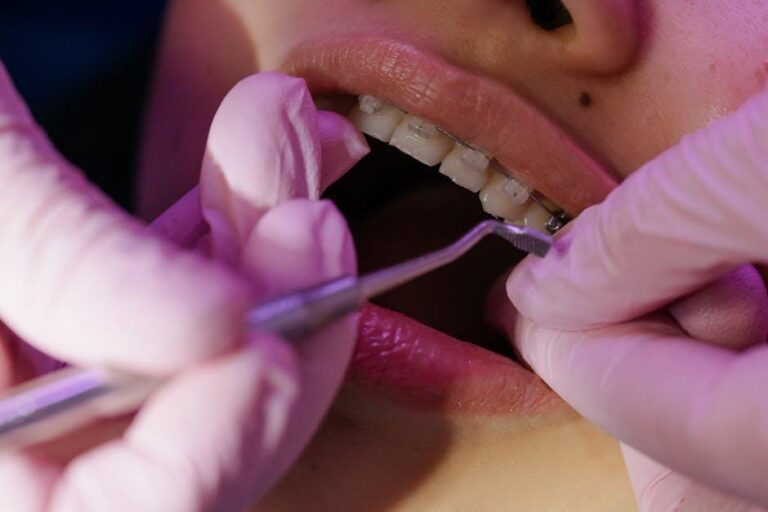
2025 Trending Technologies in Dentistry, Part 1: Personalized Dental Treatment Planning & More
By DrBicuspid.com
Introduction
As the field of dentistry rapidly evolves, 2025 promises to bring exciting technological advancements that will revolutionize patient care and clinical workflow. One of the most notable trends this year is personalized dental treatment planning, enabled by cutting-edge digital innovations. These advancements not only promise improved accuracy and patient satisfaction but also enhance long-term treatment success.
In this two-part series, DrBicuspid.com dives deep into the top 2025 technologies shaping dental practice. In Part 1, we explore the rise of personalized dental treatment planning and other emerging tech trends transforming clinical decision-making, diagnostics, and patient communication.
What is Personalized Dental Treatment Planning?
Personalized dental treatment planning refers to tailor-made dental care strategies based on an individual patient’s unique oral health conditions, genetics, lifestyle, and preferences. Unlike the traditional one-size-fits-all approach, this method leverages data-driven tools and advanced technologies to customize every aspect of care, from diagnosis to therapy selection and aftercare.
Key technologies facilitating personalized dental treatment planning include:
- Artificial Intelligence (AI) & Machine Learning
- 3D Imaging and Cone Beam Computed Tomography (CBCT)
- Digital Impressions and Intraoral Scanning
- Patient-specific Simulation Software
- Genetic and Biomarker Testing
How Technology is Driving Personalized Dental Treatment in 2025
1. Artificial Intelligence Enhancing Diagnostic Precision
AI algorithms analyze vast amounts of dental data, including radiographs, clinical photos, and patient histories, to identify subtle patterns that clinicians might overlook. This improves early detection of dental caries, periodontal disease, and oral cancers, resulting in highly customized treatment plans.
2. Advanced 3D Imaging for Detailed Visualizations
CBCT and other 3D imaging techniques allow dentists to obtain accurate anatomical insights. By visualizing teeth, bones, nerves, and soft tissues in three dimensions, clinicians can plan surgeries or restorations specific to patient anatomy—minimizing complications and maximizing outcomes.
3. Dynamic Digital Workflow with Intraoral Scanners
Traditional impressions are increasingly replaced by digital intraoral scanners that create precise 3D models instantly. These scans integrate seamlessly with CAD/CAM systems to design bespoke crowns, bridges, and orthodontic appliances, all tailored to the patient’s dental morphology.
Benefits of Personalized Dental Treatment Planning
The shift towards personalized dentistry brings multiple advantages for both patients and dental professionals:
- Improved Treatment Outcomes: Customized plans align with patient-specific risk factors and conditions, enhancing success rates.
- Enhanced Patient Experience: Patients receive care that respects their unique needs, boosting satisfaction and compliance.
- Reduced Treatment Time and Costs: Efficient planning lowers the need for trial-and-error interventions.
- Better Communication and Education: Digital visuals allow for clearer explanations and informed consent.
- Proactive Preventative Care: Personalized risk assessments support targeted prevention.
Practical Tips for Implementing Personalized Treatment Planning
Dentists aiming to harness these technologies can follow several best practices to optimize integration into clinical workflows:
- Invest in Staff Training: Ensure all team members understand new tools for smooth adoption.
- Start Small: Pilot new systems on select patient groups before wide-scale use.
- Leverage AI-Assisted Tools: Use validated AI software designed for dental diagnostics to augment clinical judgment.
- Prioritize Patient Involvement: Share digital treatment simulations to involve patients in their care choices.
- Maintain Data Privacy: Follow HIPAA and other regulations rigorously when handling sensitive patient data.
Case Study: Personalized Orthodontic Treatment Using AI and 3D Imaging
Dr. Jane Smith of SmileCare Dental Clinic recently implemented AI-driven treatment planning combined with 3D intraoral scanning. Results over six months included:
| Metric | Traditional Approach | Personalized Approach |
|---|---|---|
| Treatment Duration | 18 months | 14 months |
| Patient Satisfaction | 78% | 93% |
| Number of Office Visits | 12 | 8 |
| Adjustment Accuracy | Moderate | High |
By tailoring treatment to individual anatomical and lifestyle factors, Dr. Smith optimized appliance design and movement strategies, reducing overall treatment time and enhancing alignment precision.
Looking Ahead: The Future of Personalized Dentistry
As we progress through 2025, personalized dental treatment planning will continue to integrate with emerging technologies such as:
- Wearable Oral Sensors — Continuous monitoring of oral pH and microbiota for dynamic care adjustment.
- Tele-dentistry with AI: Remote personalized consultations and monitoring.
- Genomics-Based Risk Profiling: Precision prevention and early intervention strategies.
These innovations promise a future where dental care is not only more effective but also anticipatory and patient-centric.
Conclusion
Personalized dental treatment planning stands at the forefront of dentistry’s technological frontier in 2025. By embracing AI, 3D imaging, and digital workflows, dental professionals can create highly individualized care plans that improve outcomes, patient engagement, and practice efficiency.
Stay tuned to DrBicuspid.com for Part 2 of this series where we explore additional groundbreaking dental technologies shaping the profession’s future. Embracing these trends today will set the stage for tomorrow’s dental excellence.


